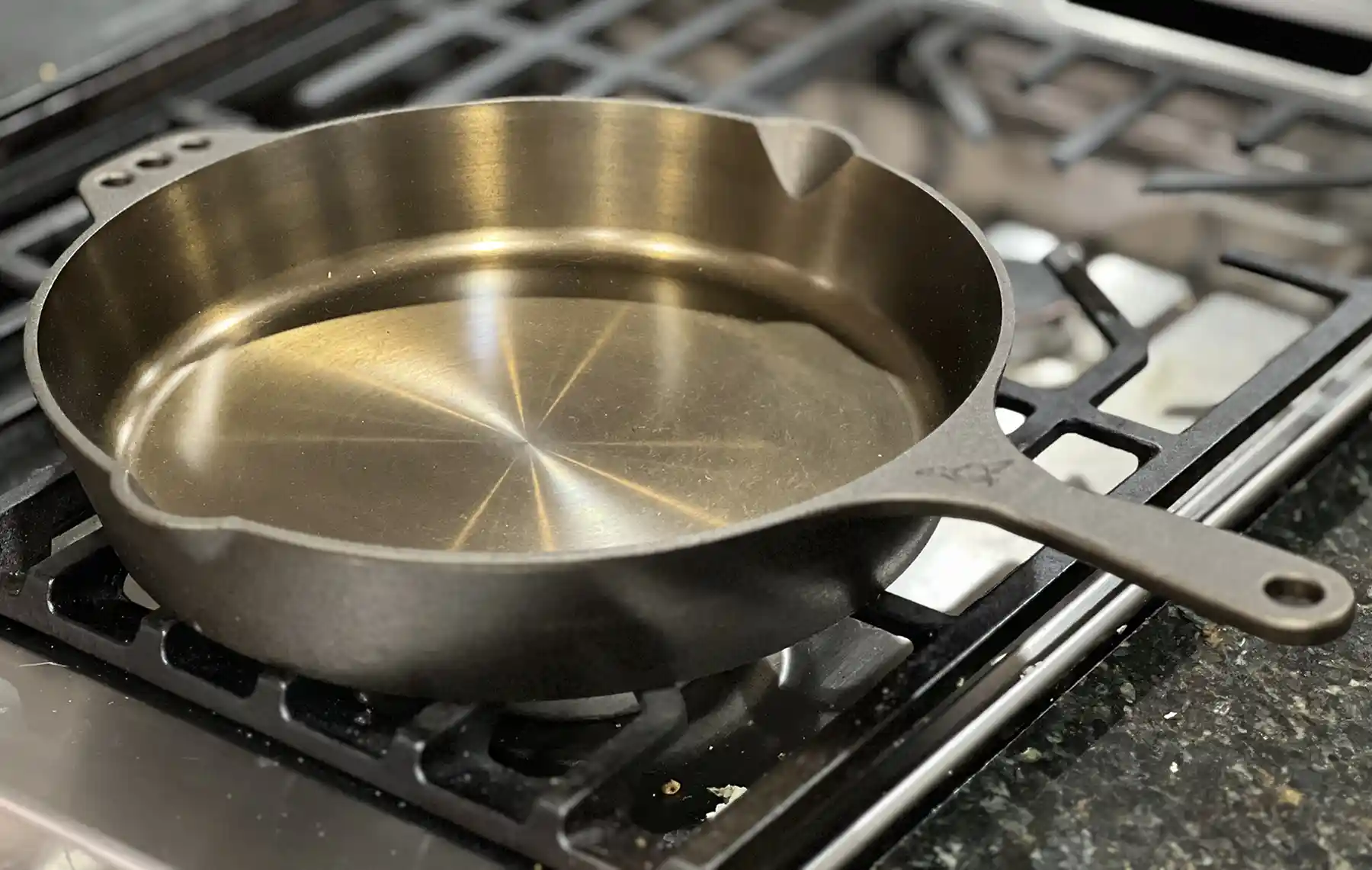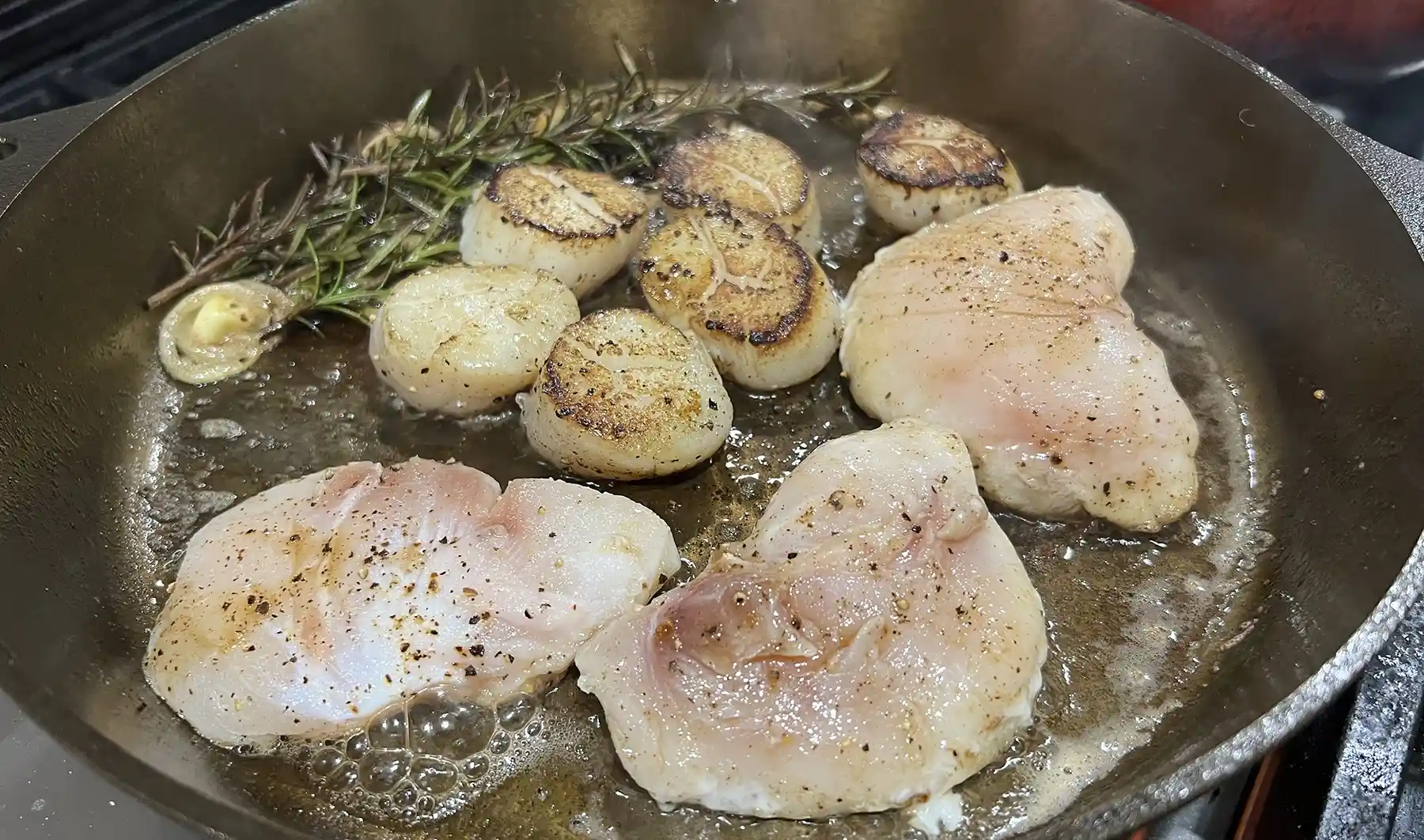I own a myriad of cast-iron skillets, and the Smithey Cast Iron Skillet is my new favorite. Maybe it’s the fact that it’s new, and my other cast iron skillets have stood the test of time and served me in the kitchen for a number of years. Or maybe it’s because the Smithey is modernized and my existing pieces just aren’t as “fancy”. Either way, the Smithey No.12 cast-iron skillet cooks like a dream, and like other cast iron skillets, they double as a family heirloom to pass down to future generations.
More than 90% of the pans I use daily are made of cast iron or steel. In fact, there’s almost always a griddle on our stovetop, ready for morning eggs or hotcakes. So why do I prefer cast iron? Simply put, it offers unbeatable heat retention and exceptional cooking performance. Its dense structure allows for even heat distribution, making it perfect for high-heat cooking like searing and baking. Plus, cast iron seamlessly transitions from stovetop to oven without any concerns. With proper care, these pans are incredibly durable and can last a lifetime. Over time, they even develop a natural non-stick surface—just remember to skip the soap when cleaning!

The No.12 Smithey cast-iron skillet is handcrafted in the U.S. and backs Smithey’s heirloom claim with a lifetime warranty. Smithey’s cast-iron skillets feature heavy gauge iron, complete with a polished copper finish, a convenient handle, holes on both sides for hanging and pour spouts. The No.12 weighs around eight pounds and has a 12” diameter with a 2” depth and an 18.1″ handle
Is Smithey Cast Iron Pan Worth It?
A 12-inch cast-iron skillet is one of the most versatile pieces of cookware a home cook can have. Practically indestructible, it distributes heat beautifully and, when properly seasoned, develops a nonstick surface—perfect for effortlessly flipping over-easy eggs (though I have to admit, I don’t always get it right). Whether you’re cooking on a gas stove in the kitchen, grilling over charcoal outside, or using campfire coals, cast iron performs flawlessly in any setting.

After cooking with the Smithey cast-iron skillet, I was completely sold—so much so that I plan to replace a majority of my mixed set of stainless steel and nonstick cookware with almost all cast iron. I was close before, but Smithey pushed me the extra step. The No.12 skillet has become my go-to, making most of my other pans obsolete (much to my wife’s delight, as she happily donated a few older ones). Keep your Smithey skillet proudly displayed on the stovetop and put it to good use! Just remember to preheat it before cooking—start with low heat and gradually increase. If it starts smoking, it’s too hot and needs a moment to cool down.
In a perfect world, I would own No. 12 Smithey cast-iron skillet and a couple of other Smithey pans such as the 10 Chef Skillet and No. 8 Chef Skillets, just to give me a few more size options.
Where To Buy Smithey Cast Iron SKillets
Smithey cast iron can be purchased on Smithey’s website and select high-end retailers. The No.12 Smithey cast-iron skillet is $220, and other skillet sizes range from $85-$250. Smithey cast-iron skillets come in five sizes: No. 6, No. 8, No.10, No.12, and No.14. These relate to the diameter in inches.
Also be sure to check out the Smithey 12″ glass lid that pairs perfectly with the No.12 Smithey cast-iron skillet.
So Who Is Smithey Ironware
Isaac Morton founded Smithey cast iron in Charleston, South Carolina with an appreciation for timeless vintage ironware. Morton began restoring old cookware and gifting it to friends and family. Before long, the Smithey line was born—a collection that marries traditional style and modern technology and processes.
The skillet is compatible with seven different cooking surfaces: on gas, induction, glasstop/ceramic or electric stoves, in the oven, over an open fire or on the grill. Cast iron is perfect for baking salmon, roasting game, browning skillet cookies, searing steaks and making biscuits. If cooking for two to four people, the No.12 is the perfect size with an ample cooking surface.
Smithey’s cast-iron skillet has superb heat retention and distribution. Naturally, cast iron is gray. Smithey cast iron takes a copper hue thanks to layers of seasoning. Over time, your Smithey will embody a deep black patina shade. Smithey has instructions on seasoning cast iron here.
Benefits of Cooking with Cast Iron
- Heat retention: Cast iron is dense and can absorb and distribute heat evenly, making it ideal for high-heat cooking like searing and baking.
- Durability: Cast iron is virtually indestructible and can be restored if mistreated. Some cast iron pans are handed down through generations.
- Non-stick: Cast iron can develop a natural non-stick coating when seasoned and cared for properly. This makes cast iron a good alternative to chemical-laden non-stick finishes.
- Versatility: Cast iron can be used on any type of stovetop, in the oven, or over an open flame. It can also be used for cooking and serving.
- Affordability: Cast iron cookware is often affordable and can be found at thrift stores and second-hand shops.
- Easy to clean: Cast iron is low-maintenance and easy to clean, especially once it’s seasoned.
- Reduces exposure to harmful additives: Cooking with cast iron can reduce exposure to harmful additives found in some processed cookware materials
The No.12 Smithey cast-iron skillet was supplied to Under Blue magazine in exchange for a Smithey Cast Iron review.